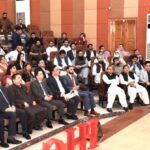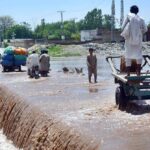ISLAMABAD, Oct 27 (APP): Most of the women getting financial
assistance form Benazir Income Support Programme (BISP) hardly meet their daily expenditure with no money saved for difficult days.
The first Evaluation Impact report of BISP revealed that more than
50 percent of beneficiary households indicate that they did not save because they did not have a regular income.
A further 32 percent cited that they did not have sufficient funds
remaining after basic expenditure.
It said BISP beneficiary households are characterized by very low
levels of savings with just 12 percent of beneficiary households having any savings at the time of the follow-up survey with an average value of just PKR 407, with similar findings for the subset of BISP beneficiary households with a BISP poverty score of less than 11.17 percent.
The report suggests that low incomes play a predominant role in
preventing BISP beneficiary households from generating a stock of
financial savings.
It further pointed out that BISP beneficiaries have very low levels
of literacy. Human capital is an important resource linked to female empowerment and is an important pre-condition that allows women agency to act upon their various goals.
Literacy is used as a proxy for human capital among women, the report
mentioned.
It added that education and literacy for women are linked to
empowerment in a number of ways in terms of higher agency. It is linked with increased involvement in decision making processes in the household, more educated women are less likely to experience domestic violence.
More educated women are more likely to engage in civic participation
such as attending political meetings, the report indicated.
Higher female literacy is linked with positive transmission effects to
future generations including increased likelihood of sending children to school and higher survival rates and better nutrition for children.
Female adult literacy rates in BISP beneficiary households are
significantly lower than national averages. Just 19 percent of adult
women in beneficiary households are literate compared to 42 percent nationally, the report further said.
The provincial variation in sample of women in beneficiary households
broadly follows the national trends, being highest in Punjab 26 percent and lowest in Balochistan which in only nine percent.
Pakistan's National News Agency



